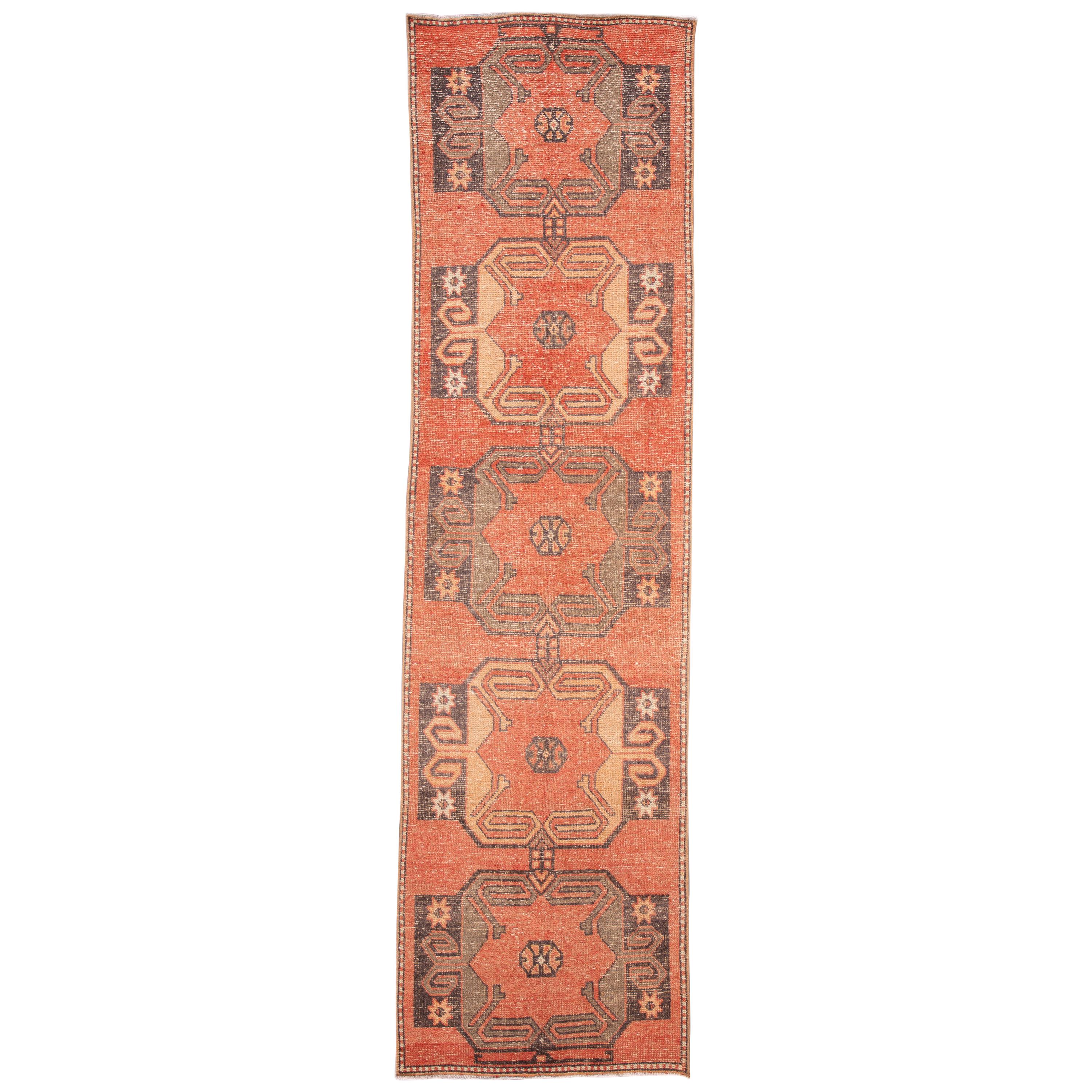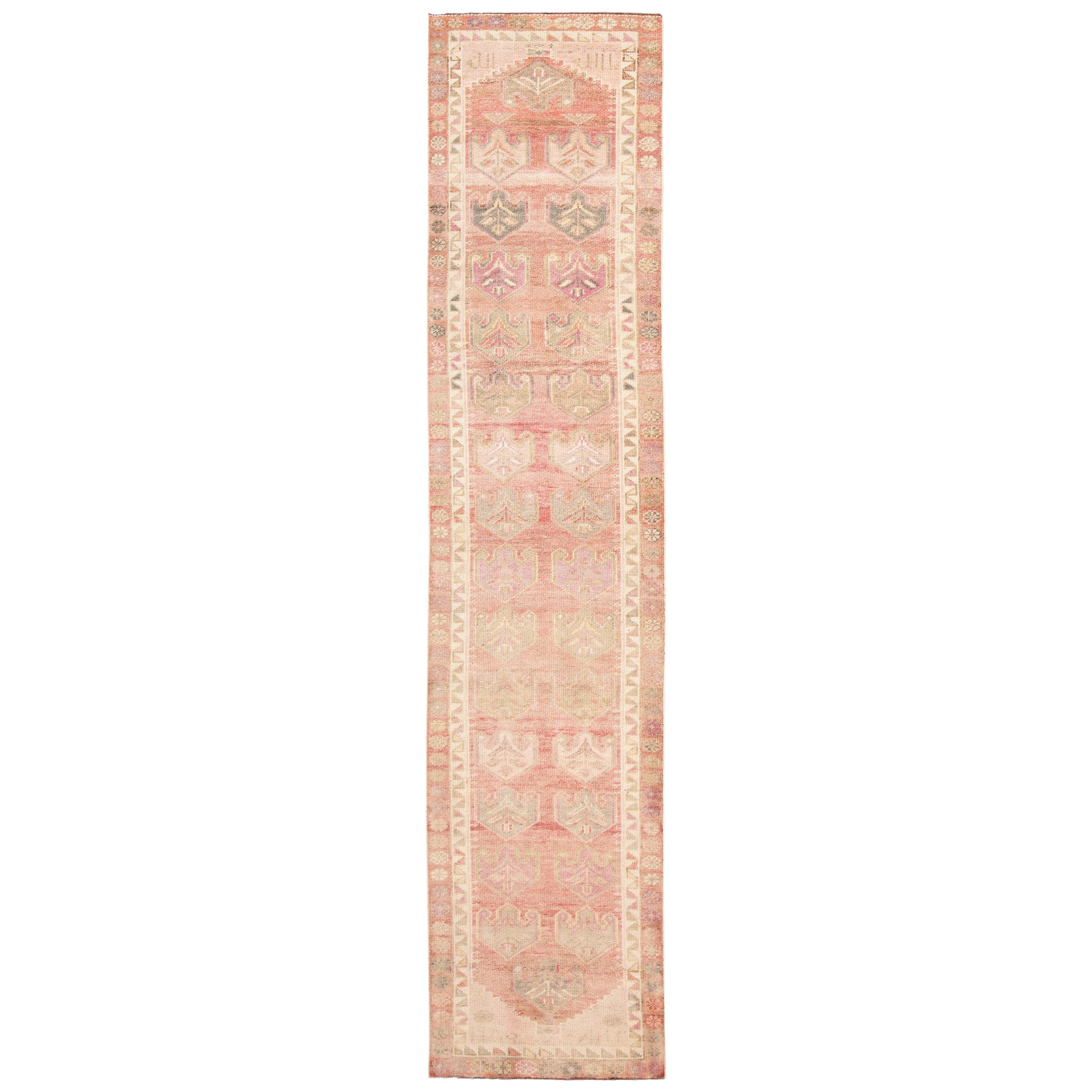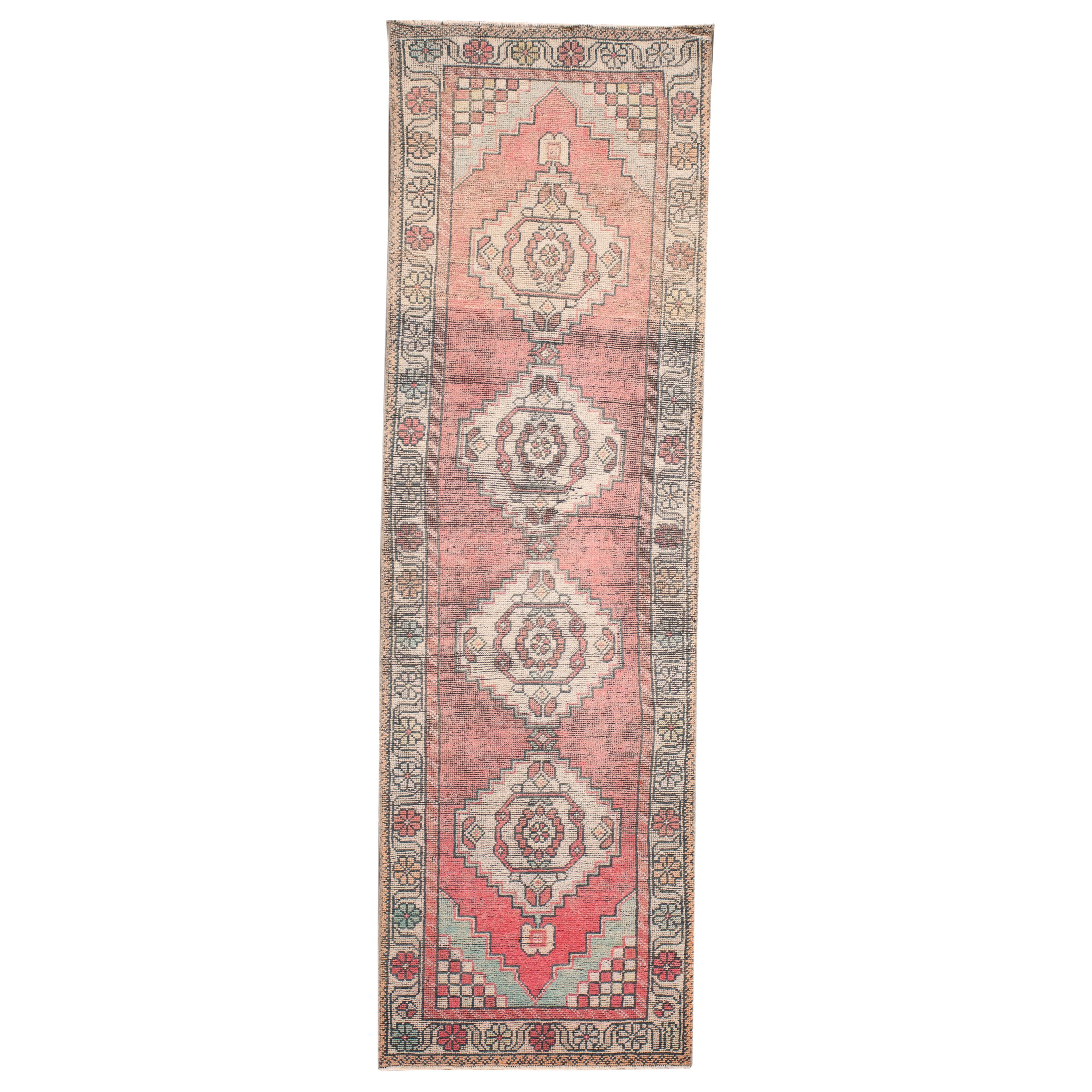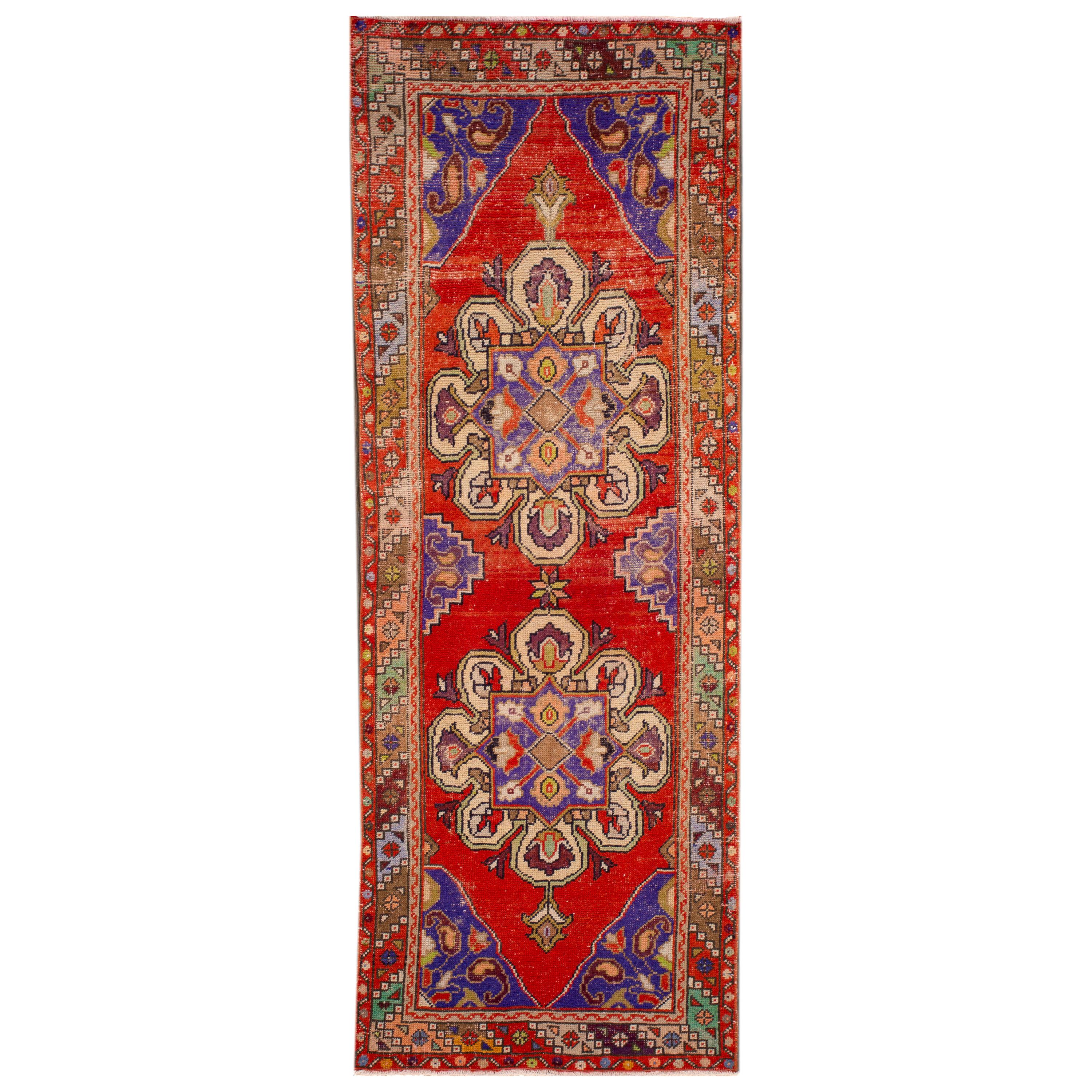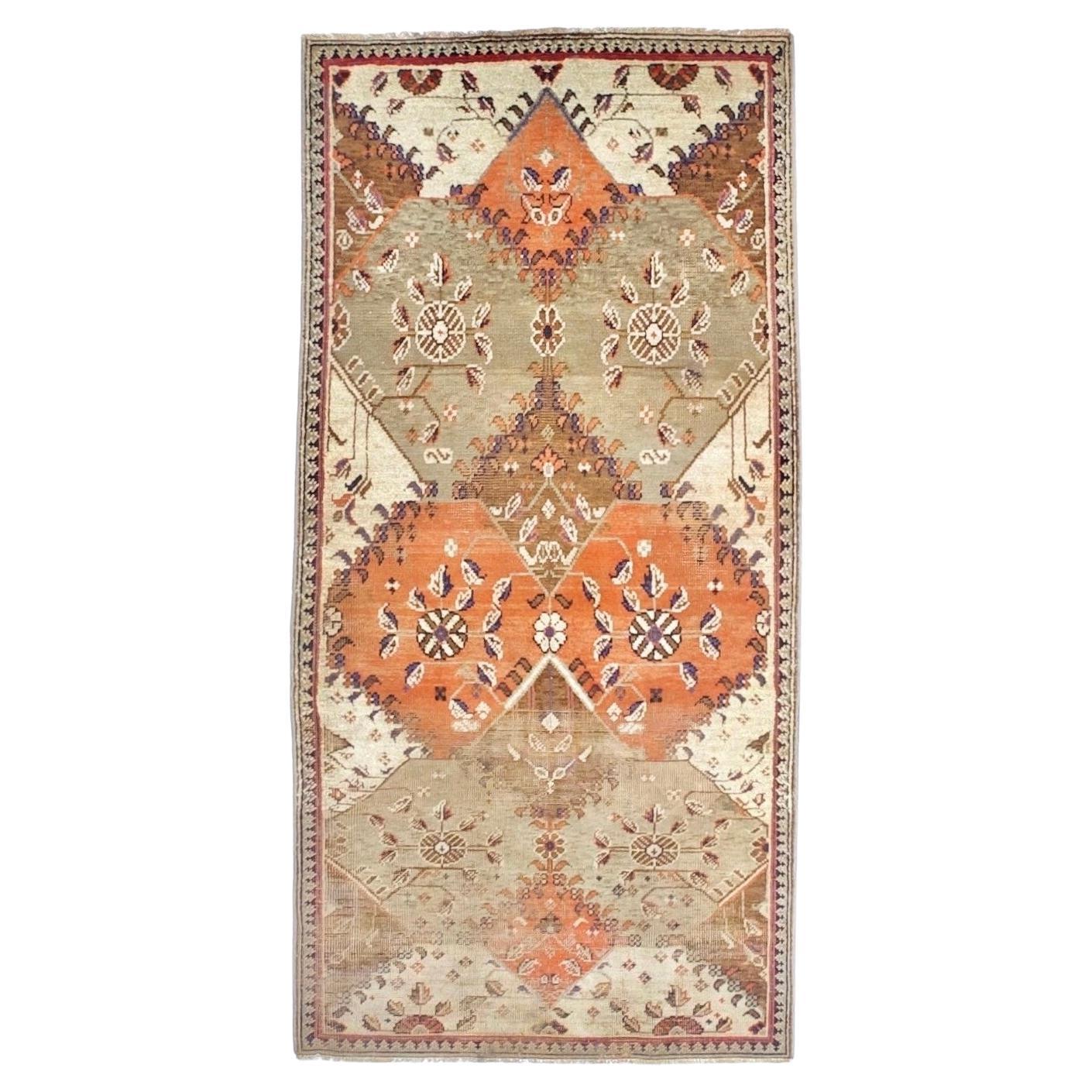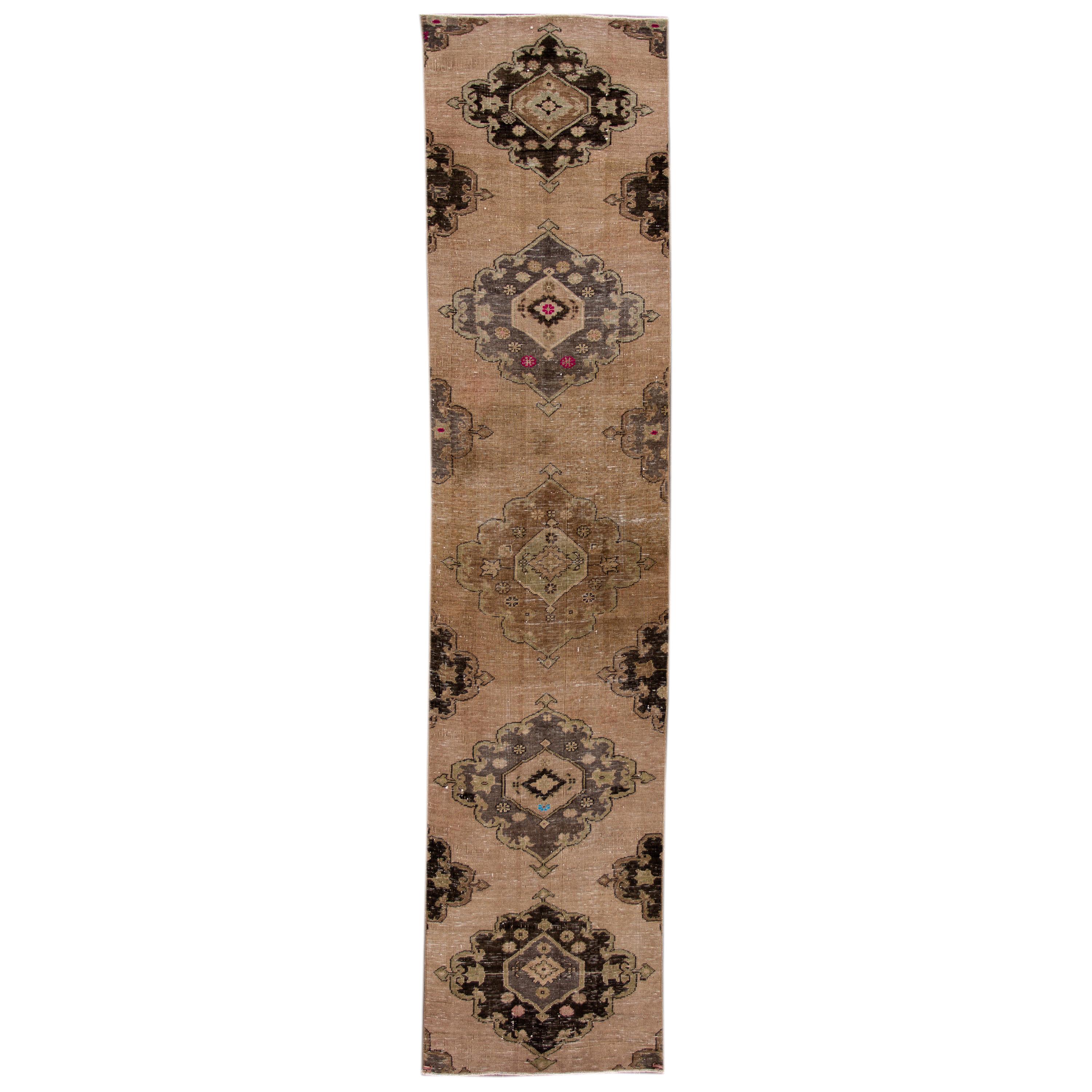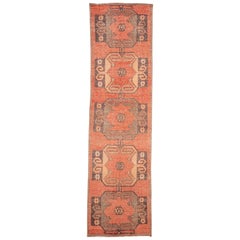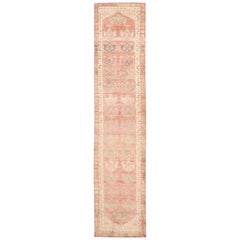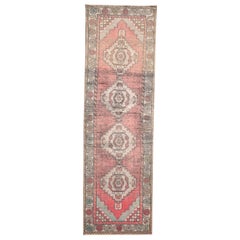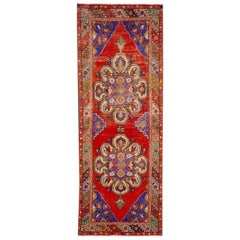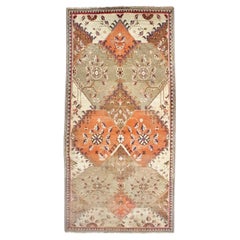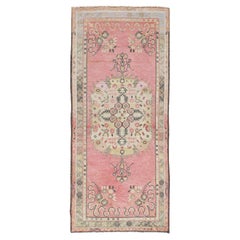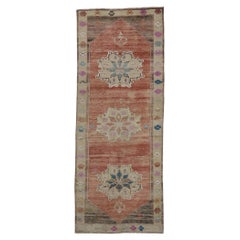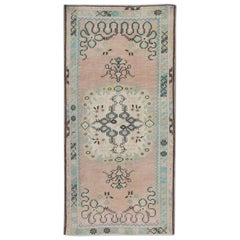Items Similar to Early 20th Century Antique Turkish Wool Runner
Want more images or videos?
Request additional images or videos from the seller
1 of 15
Early 20th Century Antique Turkish Wool Runner
$4,400
£3,325.85
€3,822
CA$6,126.97
A$6,816.01
CHF 3,573.04
MX$83,289.93
NOK 45,498.15
SEK 42,830.22
DKK 28,529.77
Shipping
Retrieving quote...The 1stDibs Promise:
Authenticity Guarantee,
Money-Back Guarantee,
24-Hour Cancellation
About the Item
Beautiful antique Turkish runner, hand knotted wool with a pink, peach field, and multi-color accents in center medallion design.
This rug measures 4' 8" x 13' 2".
- Dimensions:Width: 48 in (121.92 cm)Length: 158 in (401.32 cm)
- Materials and Techniques:Wool,Hand-Knotted
- Period:
- Date of Manufacture:1920
- Condition:Wear consistent with age and use. Minor fading.
- Seller Location:Norwalk, CT
- Reference Number:Seller: 102366081stDibs: LU914917745912
About the Seller
5.0
Platinum Seller
Premium sellers with a 4.7+ rating and 24-hour response times
Established in 1980
1stDibs seller since 2011
1,112 sales on 1stDibs
Typical response time: <1 hour
- ShippingRetrieving quote...Shipping from: Norwalk, CT
- Return Policy
Authenticity Guarantee
In the unlikely event there’s an issue with an item’s authenticity, contact us within 1 year for a full refund. DetailsMoney-Back Guarantee
If your item is not as described, is damaged in transit, or does not arrive, contact us within 7 days for a full refund. Details24-Hour Cancellation
You have a 24-hour grace period in which to reconsider your purchase, with no questions asked.Vetted Professional Sellers
Our world-class sellers must adhere to strict standards for service and quality, maintaining the integrity of our listings.Price-Match Guarantee
If you find that a seller listed the same item for a lower price elsewhere, we’ll match it.Trusted Global Delivery
Our best-in-class carrier network provides specialized shipping options worldwide, including custom delivery.More From This Seller
View AllEarly 20th Century Vintage Turkish Wool Runner Rug
Located in Norwalk, CT
Beautiful antique Turkish runner rug, handmade wool with a light rust field, gray and ivory accents in a multi medallion geometric design.
...
Category
Early 20th Century Turkish Turkish Rugs
Materials
Wool
Mid-20th Century Vintage Turkish Wool Runner Rug
Located in Norwalk, CT
Beautiful vintage runner rug, hand knotted wool with a blush field, pink and gray accents in multi medallion design.
This rug measures 2' 10" x 14' 3"
circa 1940.
Category
Mid-20th Century Turkish Turkish Rugs
Materials
Wool
Early 20th Century Vintage Turkish Wool Runner Rug
Located in Norwalk, CT
Beautiful Antique Runner rug, hand knotted wool with a light pink field, ivory and gray accents in an all-over multi medallion geometric design.
This rug measures 2' 10" x 9' 2",
...
Category
Early 20th Century Turkish Turkish Rugs
Materials
Wool
Early 20th Century Vintage Turkish Wool Runner Rug
Located in Norwalk, CT
Beautiful antique runner rug, with a red field, ivory and purple accents in Classic multi medallion design.
This rug measures 3' 2" x 8' 4"
circa 1930.
Category
Early 20th Century Turkish Turkish Rugs
Materials
Wool
Early 20th Century Vintage Turkish Wool Runner Rug
Located in Norwalk, CT
Beautiful antique wool runner rug, hand knotted wool with a dark tan field, light and dark brown accents in an allover muti medallion geometric des...
Category
Early 20th Century Turkish Turkish Rugs
Materials
Wool
Early 20th Century Antique Anatolian Wool Runner Rug
Located in Norwalk, CT
Beautiful antique Turkish Anatolian runner rug, hand knotted wool with a red field, brown and orange accents in multi medallion design.
This rug measures 3' 10" x 11' 11".
Category
Mid-20th Century Turkish Oushak Turkish Rugs
Materials
Wool
You May Also Like
Fine Antique Turkish Short Wool Runner 2'11" x 5’10"
Located in New York, NY
Fine Antique Turkish Short Wool Runner 2'11" x 5’10". The carpets, scatters, runners, long rugs and bags of the towns, villages and tribes of Anatolia, including: Oushak, Ghiordes, K...
Category
Antique Late 19th Century Turkish Turkish Rugs
Materials
Wool
Mid-20th Century Turkish Oushak Throw Rug
Located in New York, NY
A vintage Turkish Oushak throw rug. The rose-grey semi-open field displays a sand medallion with small stylized flower decoration. The medallion pendants are realistically drawn flow...
Category
Mid-20th Century Turkish Oushak Turkish Rugs
Materials
Wool
Vintage Turkish Oushak Gallery Rug
Located in Dallas, TX
53578 Vintage Turkish Oushak gallery rug 04'09 x 12'02. Full of tiny details combined with beguiling beauty, this hand-knotted wool vintage ...
Category
Mid-20th Century Turkish Oushak Turkish Rugs
Materials
Wool
$4,799 Sale Price
20% Off
Handmade Vintage Turkish Rug 2'11" x 5'10"
By Asian Modern
Located in Houston, TX
Introducing a one-of-a-kind vintage Turkish hand-knotted wool rug, carefully crafted by skilled artisans using traditional techniques passed down through generations. This exquisite ...
Category
Vintage 1960s Turkish Tribal Turkish Rugs
Materials
Wool
$817 Sale Price
40% Off
One-of-a-Kind Vintage Handmade Turkish Runner Rug for Hallway Decor
Located in Spring Valley, NY
A vintage Turkish runner rug in brown, beige, green and pink colors. Finely hand-knotted with even medium wool pile on wool foundation. Very good condition. Sturdy and as clean as a ...
Category
Mid-20th Century Turkish Turkish Rugs
Materials
Wool
$808 Sale Price
40% Off
Free Shipping
3.7x11.5 Ft Vintage Handmade Turkish Runner Rug, Wool Hallway Carpet
Located in Spring Valley, NY
A mid-century Oushak runner from West Anatolia, wool pile on wool foundation, very good condition, sturdy and as clean as a brand new rug. Measure: 3.7 x 11.5 ft.
Category
Mid-20th Century Turkish Oushak Turkish Rugs
Materials
Wool
$1,283 Sale Price
40% Off
Free Shipping
